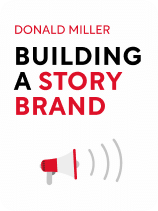

This article is an excerpt from the Shortform book guide to "Building a Storybrand" by Donald Miller. Shortform has the world's best summaries and analyses of books you should be reading.
Like this article? Sign up for a free trial here .
What does selling happiness mean? How can you use happiness in your marketing campaigns?
When you write your storybrand brandscript to have a happy ending, you’re selling happiness. There are three important story endings that can help you sell happiness.
Keep reading to find out what selling happiness means and how to use it in marketing campigns.
Three Popular Story Endings for Selling Happiness
In addition to the grid exercise, you can pull inspiration from the three most popular (most aligned with inherent human desires) ways to end stories:
Ending #1: The Hero Wins Status
Everyone wants to be popular, respected, or esteemed. For example, think about how many coming-of-age movies feature nerdy characters who end up dating the most popular person at the high school.
There are a few ways a brand can help a hero get status:
- Offer rewards. Points or freebies give people status.
- For example, if you sign up to be a member at Starbucks, you get points every time you buy something. Once you collect a certain number of points, you move up a rewards level and can redeem your points for free drinks.
- Offer perks. Identify your top-spending clients and give them perks, such as a title like “Gold Member,” skip-the-line access, or founder updates.
- For example, if you’re a member of National Car Rental’s “Emerald Club,” you get faster service.
- Limit product runs. If you only offer a certain amount of a specific product, not everyone can have one. Owning a rare product is viewed as a status symbol.
- For example, Jeep only makes a certain number of Grand Cherokees and puts a “limited” sticker on them so everyone knows that they’re rare.
- Associate ownership of your products with status. Certain products, especially luxury items, inherently have status associated with them. (See Chapter 9 for more on this technique.)
- For example, a person who owns a Rolex appears refined, successful, and classy.
Ending #2: The Hero Becomes Whole by Connecting With an External Factor
In this ending, a hero finds an external factor that completes her. For example, a superhero who’s bad at directions could partner with another superhero whose strength is mapmaking.
There are a few ways a brand can offer external completion:
- Reduce frustration. If your brand can help a customer finish a frustrating, outstanding task, you’re offering them completeness in the form of ending their frustration.
- (Shortform example: If you sell grout cleaner, your product eliminates that frustration and anxiety people feel every time they walk into their shower and see grime.)
- Make work easier. If you don’t have the right equipment to do a job, it’ll take you longer. Your product can make someone whole by giving them the tool they need to make them powerful enough to finish a task.
- Free up time. Many people feel that if they don’t have enough time in which to complete all their responsibilities, it’s a personal failing. If your product can save time, it can make your customers’ lives more complete.
Ending #3: The Hero Becomes Whole by Reaching Their Potential
In this ending, a hero becomes whole by reaching her potential or accepting herself as she is, outcomes that don’t require any external intervention. For example, in Bridget Jones’s Diary, for most of the movie, Bridget thinks she wants a relationship with her boss, but in the end, she realizes she’s too good for him.
There are a few ways a brand can offer self-realization:
- Inspire customers. If you can associate your brand with something inspiring, such as performing an athletic or intellectual feat, your customers will feel that your brand will help them reach their potential.
- For example, Red Bull might help you achieve your athletic potential because other extreme athletes who have been successful drink it too.
- Help customers accept themselves. If people who accept themselves use your brand—for example, people who have positive body-image—customers who want to be able to accept themselves might turn to you too.
- For example, American Eagle ran a campaign in which it hired ordinary people as models and didn’t Photoshop any of the images.
- Create an opportunity to support a cause. People want to leave an imprint on the world. If your brand does something good for the world every time a customer purchases something, customers know that by choosing to buy from you, they’re making a difference, which makes them feel they’re achieving their potential of being a good person.
- For example, whenever someone buys a pair of Tom’s Shoes, the company gives a free pair of shoes to someone in need.
Sharing the Happy Ending
Once you’ve come up with your specific happy ending, a simple way to describe it is via images. No matter what your product is, an image of happy-looking people engaging with it can be a great marketing tool. (Shortform example: If you sell couches, put a photo of a happy family relaxing on the couch together on your website.)
Writing Your Brandscript
To write your brandscript:
- Return to your StoryBrand BrandScript or sheet of paper.
- Brainstorm how customers’ lives will change if they start using your products and the happy endings these changes will lead to.
- Write your top positive stakes on your script or sheet of paper.

———End of Preview———
Like what you just read? Read the rest of the world's best book summary and analysis of Donald Miller's "Building a Storybrand" at Shortform .
Here's what you'll find in our full Building a Storybrand summary :
- How storytelling enhances brand marketing
- Why you should make the consumer the hero of your brand's story
- The 7 elements that make marketing work






